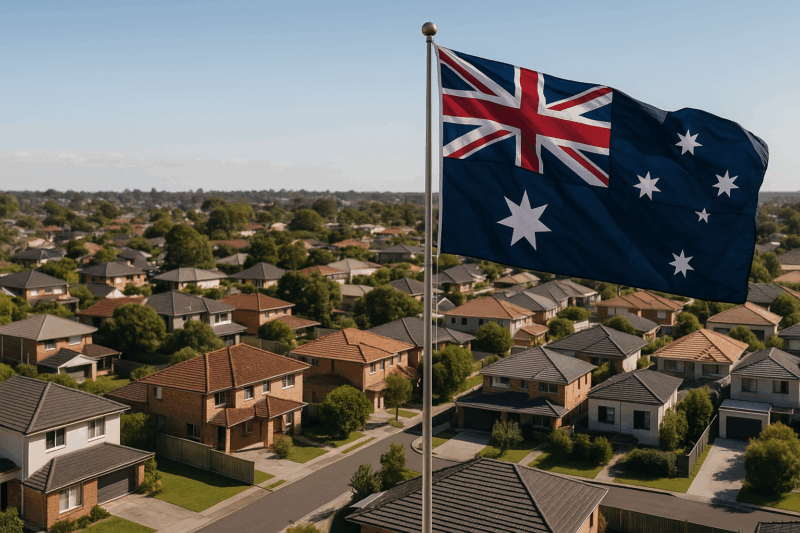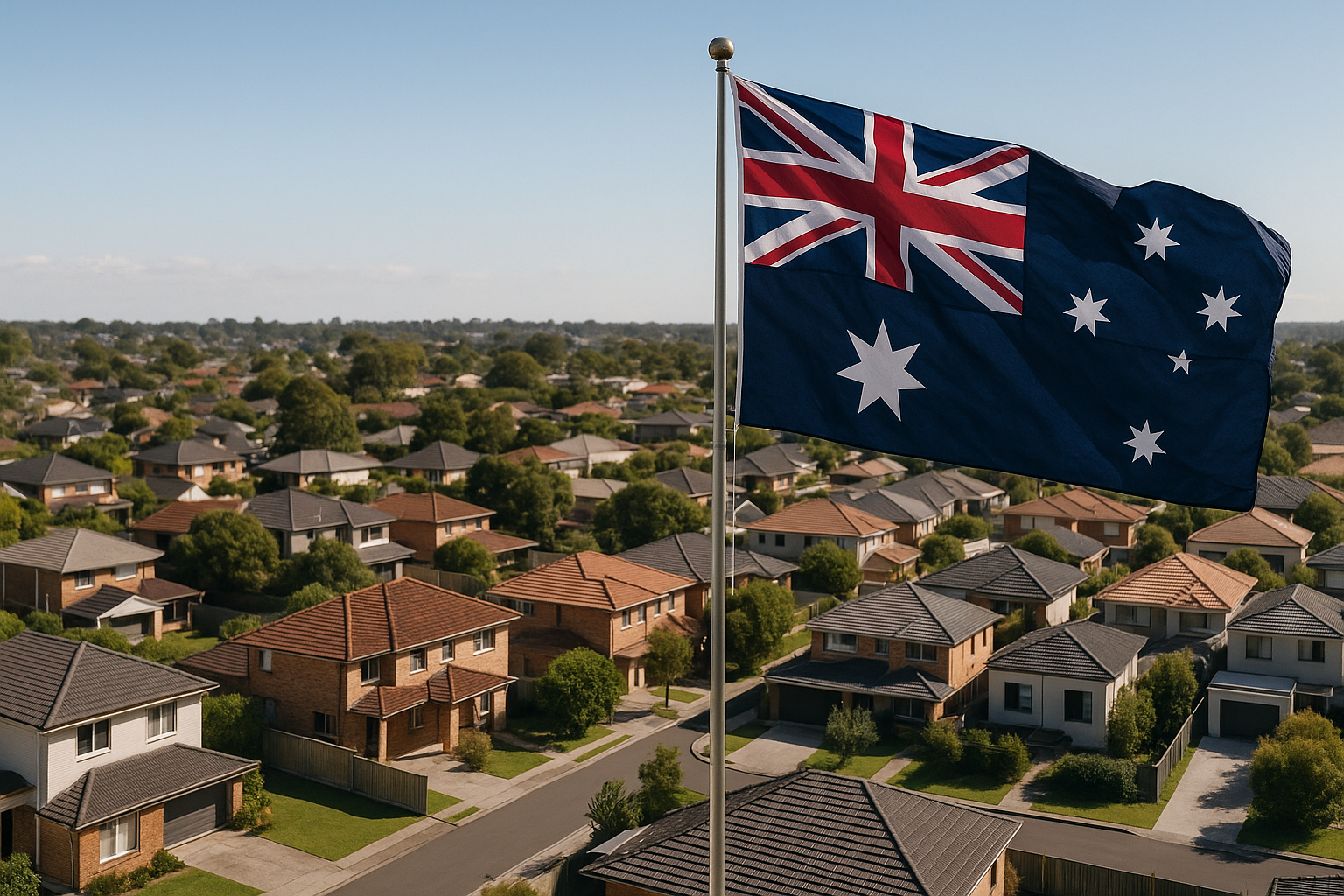
Key takeaways
House and unit prices across the combined capitals hit record highs in the September quarter, the fastest house price growth in nearly four years.
Brisbane has overtaken Melbourne and Canberra to become Australia’s second-most expensive housing market for the first time ever.
Sydney and Melbourne have reawakened, recording their fastest gains in years, while Adelaide and Perth continue to climb, signalling a reshuffle of Australia’s property hierarchy.
Units are now outperforming houses in Brisbane, Adelaide, Perth, and Darwin, as investors and first-home buyers chase value.
Meanwhile, houses remain dominant in Sydney and Melbourne, but the gap between houses and units is narrowing.
With demand underpinned by population growth, limited housing supply, and stronger consumer confidence, the market’s trajectory remains upward.
But as affordability stretches, growth will likely moderate rather than reverse, favouring well-located, investment-grade assets that outperform over the long term.
Australia’s housing market has kicked into a higher gear, and this time, it’s not just a few cities leading the charge.
Across the nation, property values are climbing at a pace we haven’t seen in years, with houses and units both breaking records.
According to Dr Nicola Powell, Domain’s Chief of Research and Economics:
“Australia’s housing market has shifted into a higher gear.”
On the latest Domain House Price Report, she notes that “nearly every capital city recorded gains across both property types, the broadest upswing in years.”
And she’s right, this isn’t a patchy recovery; it’s a nationwide resurgence.

A market firing on all cylinders
The September quarter data from Domain tells a powerful story.
House and unit prices across the combined capitals hit record highs, house price growth is now running at its fastest pace in nearly four years, while unit prices are growing at double the rate they were this time last year.
What’s behind the surge? It’s a perfect storm of positive factors:
-
Lower interest rates and improved borrowing capacity
-
A rise in real incomes and a still-tight jobs market
-
Strong consumer sentiment and low levels of housing stock
-
The highest auction clearance rates since mid-2023
-
Expanded first-home buyer incentives
Together, these forces are igniting demand right across the country, and buyers are responding enthusiastically.
Market leadership is being rewritten
The Domain report suggests that the traditional property hierarchy is shifting in ways we haven’t seen before.
Sydney and Melbourne, after sitting on the sidelines for much of the post-pandemic boom, are back in the game.
Sydney’s house prices jumped 3.4% in the September quarter, adding nearly $60,000 to the median value to reach a record $1.75 million.
Melbourne wasn’t far behind, with house prices up 2.2% to $1.083 million, the strongest rise in almost four years.
Meanwhile, Brisbane has quietly made history.
For the first time ever, Brisbane has overtaken both Melbourne and Canberra to become Australia’s second-most expensive housing market.
Its median house price now sits at $1.1 million, after a 3.7% rise in the quarter, the city’s 11th straight quarterly gain, and its longest upswing in more than two decades.
Adelaide has also been a standout performer.
Once the most affordable capital, it’s now the third-most expensive unit market, overtaking much of the pack in under four years.
Perth, too, is on the verge of a symbolic milestone, its median house price now sits just $19,000 shy of $1 million.
Houses still lead, but units are making a comeback
For most of this cycle, detached houses have been the clear winners, especially in our major capitals.
But affordability pressures are now reshaping demand, and units are fighting back.
Table 1: House prices, quarterly and annual changes
| HOUSES | STRATIFIED MEDIAN PRICE | ||||||
| Sep-25 | Jun-25 | Sep-24 | Quarterly change | Annual change | Price peak achieved | Price from peak |
| $1,751,728 | $1,693,580 | $1,647,598 | 3.4% | 6.3% | Sep-25 | 0.0% |
| $1,083,043 | $1,059,998 | $1,019,578 | 2.2% | 6.2% | Dec-21 | -0.9% |
| $1,101,114 | $1,062,262 | $1,000,876 | 3.7% | 10.0% | Sep-25 | 0.0% |
| $1,048,773 | $1,015,966 | $948,966 | 3.2% | 10.5% | Sep-25 | 0.0% |
| $1,100,392 | $1,074,971 | $1,071,238 | 2.4% | 2.7% | Jun-22 | -6.2% |
| $981,259 | $965,877 | $891,791 | 1.6% | 10.0% | Sep-25 | 0.0% |
| $744,926 | $711,776 | $689,741 | 4.7% | 8.0% | Mar-22 | -2.3% |
| $656,858 | $623,543 | $612,088 | 5.3% | 7.3% | Dec-13 | -3.2% |
| $1,236,776 | $1,201,622 | $1,150,066 | 2.9% | 7.5% | Sep-25 | 0.0% |
In Brisbane, Adelaide, Perth, and Darwin, units are outperforming houses, as investors and first-home buyers chase better value.
Table 2: Unit prices, quarterly and annual changes
| UNITS | STRATIFIED MEDIAN PRICE | |||||||
| Capital City | Sep-25 | Jun-25 | Sep-24 | Quarterly change | Annual change | Price peak achieved | Price from peak |
| Sydney | $840,422 | $824,951 | $818,706 | 1.9% | 2.7% | Sep-25 | 0.0% |
| Melbourne | $590,597 | $580,878 | $566,380 | 1.7% | 4.3% | Dec-21 | -2.0% |
| Brisbane | $715,451 | $686,376 | $627,226 | 4.2% | 14.1% | Sep-25 | 0.0% |
| Adelaide | $632,660 | $602,330 | $551,090 | 5.0% | 14.8% | Sep-25 | 0.0% |
| Canberra | $597,929 | $607,144 | $596,527 | -1.5% | 0.2% | Sep-23 | -4.4% |
| Perth | $560,471 | $539,120 | $481,557 | 4.0% | 16.4% | Sep-25 | 0.0% |
| Hobart | $546,075 | $542,214 | $537,126 | 0.7% | 1.7% | Sep-22 | -3.9% |
| Darwin | $388,504 | $364,958 | $347,099 | 6.5% | 11.9% | Mar-16 | -20.1% |
| Combined capitals | $706,579 | $690,394 | $667,970 | 2.3% | 5.8% | Sep-25 | 0.0% |
Brisbane’s unit market, for example, rose 4.2% in the September quarter to a record $715,451, marking 18 straight quarters of growth, an all-time record.
Even Perth’s unit prices jumped 4.0% to a new peak of $560,471, the strongest rise in nine months.
In contrast, Sydney and Melbourne continue to see stronger gains in houses than units, suggesting that while affordability is biting, aspirational buyers are still prioritising space and lifestyle when they can.
The broadest upswing in years
Momentum is now firmly entrenched across the country.
-
Darwin is up 5.3% for houses and 6.5% for units, the city’s best performance in years.
-
Hobart is also back in the game, with houses up 4.7% and on track to hit a new record before year’s end.
-
Even Canberra, which had slowed earlier in the cycle, is showing renewed energy.
As Dr Powell observed, “the upswing is no longer patchy but firmly entrenched.”
Growth may be broad-based, but not all cities are moving at the same pace, and that’s where the opportunity lies.
What happens next?
The fundamentals remain strong: population growth continues to outpace housing supply, investor activity is picking up, and confidence is rebuilding as buyers adjust to the “new normal” of interest rates.
However, affordability is becoming a real constraint, especially in Sydney and Melbourne, where the median house price is now well beyond the reach of many first-home buyers.
That means the pace of growth is likely to moderate, even if the direction remains upward.
In other words, the market still has legs, but we’re likely to see rotation, not retreat.
Smaller capitals and affordable segments may continue to outperform, while the larger cities regain steady, sustainable growth.
Final thoughts
After years of volatility, Australia’s housing market is looking remarkably resilient.
This is no speculative frenzy, it’s a structurally supported recovery driven by real demand, strong employment, and constrained supply.
But as always, not every location will rise equally.
Smart investors will focus on quality assets in proven, investment-grade suburbs, the kind of properties that outperform over the long term, regardless of where we are in the cycle.
Because in this kind of market, timing helps, but asset selection is what truly builds wealth.














